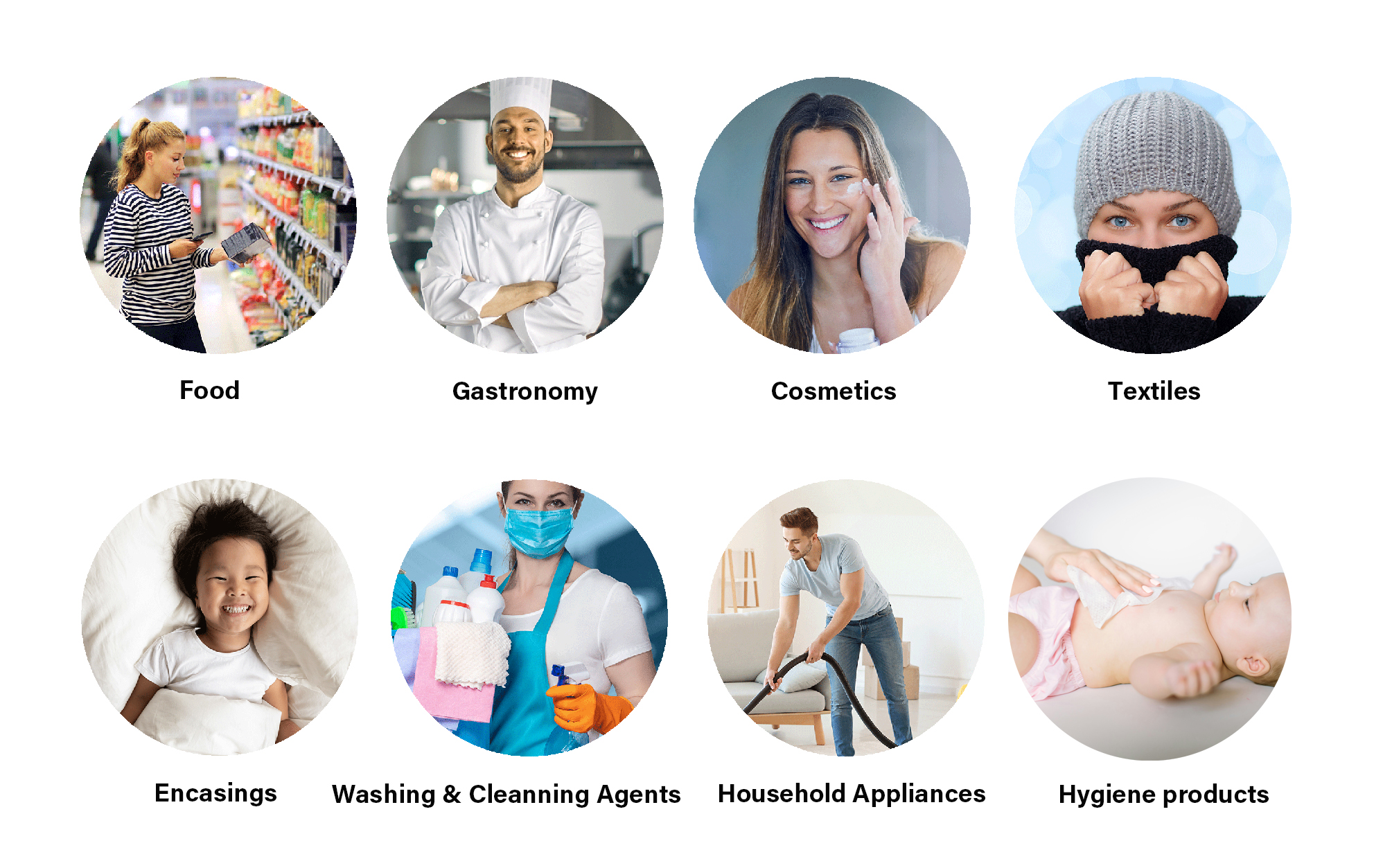
In order for food and beverages to be certified, at least one allergy-inducing ingredient (e.g. gluten or lactose) must be demonstrably removed using suitable processes so that a certain limit value is not exceeded. The organisation must also have an appropriate allergen management system in place. Under certain conditions, food and beverages that do not naturally contain the allergy-inducing substance can also be certified.
In order for cosmetics to be certified, they must contain the 81 potentially allergenic substances in only very limited quantities. The Allergy Seal of Quality bans them at concentrations that are 10 times lower than specified by Swiss law. In addition to the basic requirements listed above, the claims "without perfume/without fragrances" and "without dyes" are also tested if they are advertised or used on the packaging.
In order for technical products to be certified, allergens must be kept away from allergy sufferers in accordance with a specified percentage through removal (vacuum, washing), filtration (filtration), or retention (barrier). However, certified vacuum cleaners do not necessarily have to be equipped with a dust collection bag.
Depending on the desired claim (e.g. for sensitive skin), the applicable requirements regarding chemical and mechanical irritation of the skin must be observed. Requirements for latex and latex substitutes, silk, and textile floor coverings are also regulated.
In order for mite protection covers (encasings) to be certified, allergens must be kept away from allergy sufferers to a specified percentage degree by retaining the allergens (barrier).
In order for hygiene articles to be certified, they may contain the 81 potentially allergenic compounds, azo and disperse dyes, formaldehyde, nickel and chromium (VI) only in very limited quantities.
In addition to the above-mentioned basic requirements, the claims "without perfume / without fragrances", "without dyes" and "without latex" are tested if these claims are advertised or used on the packaging.
Catering establishments with the Allergy Seal of Quality can cater to the needs of people with allergies and intolerances.
In order for catering establishments to be certified, they must have a tested allergen management system and employees must be trained so that they can provide information about ingredients that can trigger allergies and intolerances in the food and drinks on offer.
Establishments that deal with food allergies and intolerances can communicate directly and in a focussed manner with a very large target group and benefit from satisfied and returning guests.